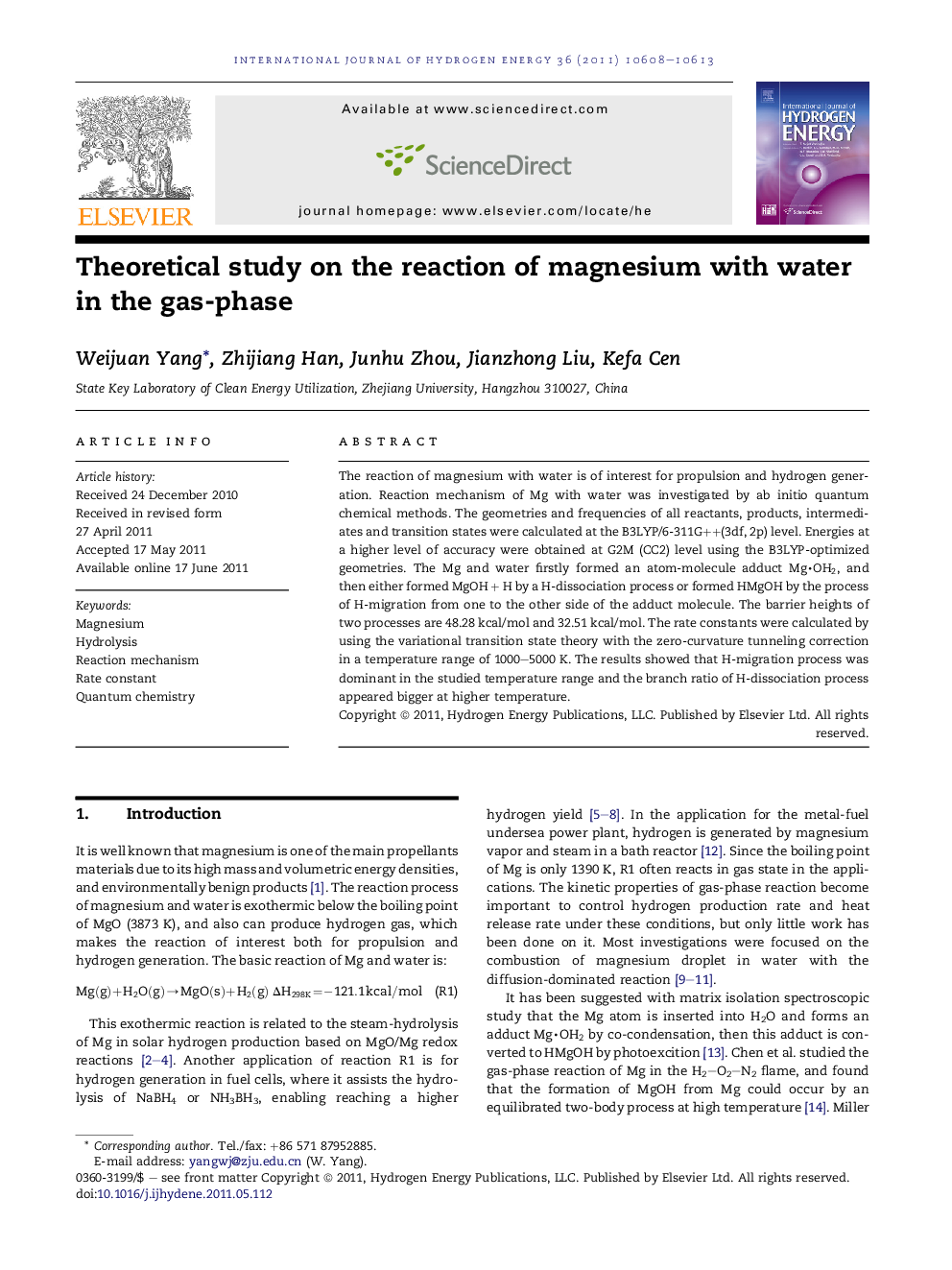| Article ID | Journal | Published Year | Pages | File Type |
|---|---|---|---|---|
| 1277528 | International Journal of Hydrogen Energy | 2011 | 6 Pages |
The reaction of magnesium with water is of interest for propulsion and hydrogen generation. Reaction mechanism of Mg with water was investigated by ab initio quantum chemical methods. The geometries and frequencies of all reactants, products, intermediates and transition states were calculated at the B3LYP/6-311G++(3df, 2p) level. Energies at a higher level of accuracy were obtained at G2M (CC2) level using the B3LYP-optimized geometries. The Mg and water firstly formed an atom-molecule adduct Mg⋅OH2Mg⋅OH2, and then either formed MgOH + H by a H-dissociation process or formed HMgOH by the process of H-migration from one to the other side of the adduct molecule. The barrier heights of two processes are 48.28 kcal/mol and 32.51 kcal/mol. The rate constants were calculated by using the variational transition state theory with the zero-curvature tunneling correction in a temperature range of 1000–5000 K. The results showed that H-migration process was dominant in the studied temperature range and the branch ratio of H-dissociation process appeared bigger at higher temperature.
► The reaction paths of Mg with water are obtained by ab initio quantum chemical methods. ► Higher level reaction enthalpy of Mg with water has been obtained by G2M(CC2) method. ► The rate constants of Mg with water are calculated using the variational transition state theory.
